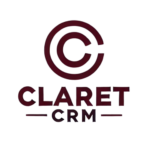Handling customer service efficiently is crucial for retaining loyal clientele and gaining new customers through positive word-of-mouth. Companies are continuously searching for competitive advantages, and utilizing CRM (Customer Relationship Management) systems with robust metrics offers significant potential. This leads us to a vital question: which of the following is a common customer service CRM metric?
You’ll learn:
- The importance of CRM metrics in customer service
- A breakdown of common CRM metrics
- Real-world examples and use cases
- Differences between various CRM tools and their metrics
- Answers to common FAQs about CRM metrics
Understanding CRM Metrics
Businesses often grapple with high customer churn rates. According to studies, acquiring new customers can cost five times more than retaining existing ones. This underscores the value of using CRM systems bolstered by insightful metrics to enhance customer service. But which of the following is a common customer service CRM metric that can help drive this change?
CRM metrics are diverse, but they primarily aim to evaluate aspects such as customer satisfaction, issue resolution efficiency, and operational effectiveness. Selecting the right metric is crucial as it helps organizations adjust strategies, improve services, and consequently, bolster customer loyalty.
Key Customer Service CRM Metrics
1. Customer Satisfaction Score (CSAT)
CSAT is one of the most straightforward metrics, garnered through straightforward surveys asking customers to rate their satisfaction with a service or product.
Use Case
A company like Apple might use CSAT to track the satisfaction levels following a customer's visit to a Genius Bar. By gauging satisfaction in real-time, they can immediately tweak their services to better meet customer needs.
2. Net Promoter Score (NPS)
NPS measures how likely customers are to recommend your company to others. It’s a powerful metric for understanding customer loyalty and predicting business growth.
Use Case
Consider an e-commerce platform: utilizing NPS, they can identify their promoters and encourage them to share positive reviews, effectively using their satisfied clients as marketing assets.
3. First Response Time (FRT)
This metric tracks the time taken to provide an initial response to a customer's query or issue. Quick responses are often associated with higher customer satisfaction.
Use Case
A software company can use FRT data to optimize its technology support, ensuring teams are adequately resourced to handle peak times and reduce response delays.
Advanced CRM Tools and Their Metrics
Different CRM tools offer various capabilities, and understanding these can aid in selecting the right fit for a business. Let’s consider how some popular CRM tools leverage customer service metrics.
Salesforce
As a CRM powerhouse, Salesforce offers a plethora of metrics, such as case resolution time and service level agreement compliance, which help businesses streamline operations and maintain high customer satisfaction.
Example
A telecommunications firm using Salesforce can better manage escalations by tracking resolution times, ensuring issues are addressed within SLA limits.
Zendesk
Zendesk is renowned for its customer service focus, boasting features like ticket volume tracking and customer satisfaction ratings.
Example
A retail company might utilize Zendesk’s analytics to adjust staffing during high-volume sales seasons, ensuring customer queries are handled efficiently.
HubSpot
HubSpot integrates various customer service metrics such as call volume and customer feedback, providing a holistic view of customer interactions.
Example
A startup might use HubSpot to monitor their growing customer service demands, enabling them to scale their teams appropriately as customer bases expand.
Setting the Right Metrics for Your Business
Choosing the right CRM metrics demands careful consideration. While all metrics provide valuable insights, it’s vital to align them with specific organizational goals.
Choosing Metrics
- Evaluate Organizational Goals: Determine what you aim to achieve with your CRM strategy—be it improving satisfaction or increasing retention.
- Consider Industry Standards: Industry benchmarks can provide a useful yardstick for your metrics choices.
Implementing CRM Metrics Effectively
- Continuous Training: Equip your customer service team with the training needed to act on CRM insights.
- Regular Reviews: Periodically analyze metric performance and adjust strategies accordingly.
FAQs: Which of the Following Is a Common Customer Service CRM Metric?
What is the difference between CSAT and NPS?
CSAT measures immediate satisfaction on specific interactions, while NPS gauges overall loyalty and the likelihood of a customer recommending the company.
How frequently should CRM metrics be reviewed?
Ideally, CRM metrics should be reviewed weekly or monthly, depending on the business scale and customer interaction volume to allow for timely strategy adjustments.
Can multiple CRM tools be used concurrently?
Yes, businesses often use multiple CRM tools tailored to different needs, like Salesforce for sales tracking and Zendesk for customer service, leveraging each’s strengths.
Is FRT a universally applicable metric?
While FRT is crucial for many service-driven industries, its importance might decrease for businesses with less urgent customer interaction requirements.
Which metric should a startup prioritize initially?
A startup should focus on CSAT to establish a satisfied customer base while gradually exploring other metrics as the business matures.
Summary: Essential CRM Metrics
- CSAT and NPS are crucial for measuring satisfaction and loyalty.
- FRT helps optimize response times and enhance service quality.
- Salesforce, Zendesk, and HubSpot are popular tools, each offering unique metrics to enhance customer service.
- Choosing the right metrics should align with business goals and industry standards.
- Regular review and training can maximize the benefits of CRM metrics in elevating customer service excellence.
CRM metrics play a pivotal role in guiding businesses towards customer service excellence and sustainability. Understanding which of the following is a common customer service CRM metric can transform mere data into actionable insights, driving company growth and customer satisfaction.



